There are many factors that determine the success of growing potatoes. The most important ones are planting potatoes, seed quality, proper care, treatment from pests, timely top dressing. Lack of necessary knowledge leads to negative consequences. This affects not only the quality, but also reduces the amount of yield.
Material Content:
- 1 Preparations for planting potatoes
- 2 Potato planting dates for a good harvest
- 3 Conservative planting methods
- 4 Innovative Landing Techniques
- 5 Unconventional methods of planting potatoes
- 6 Landing under a film and agrofibre
- 7 How and when to plant potatoes in a greenhouse
- 8 Processing potatoes after planting
- 9 Secrets to Getting a Good Harvest
Preparations for planting potatoes
The first thing you need to do is sort the tubers that will serve as seed material. Sick, rotten or frozen tubers reduce the likelihood of developing fungal diseases, they are rejected.
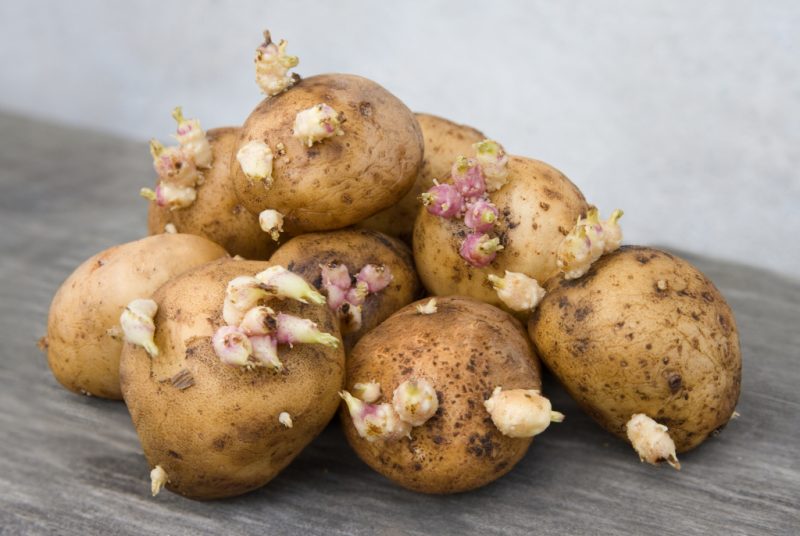
Additional conditions that must be observed when germinating potatoes:
- maintaining 80% humidity in the room;
- correct temperature + 10-15 ° C;
- treatment with stimulants;
- germination of potatoes before planting begin in 3-5 weeks;
- sorted potatoes are laid out in boxes in 2-3 layers.
Stimulation is aimed at accelerating the growth of sprouts, which after 2-3 weeks reach a length of 1-2 mm. Germination allows you to check the strength of seed potatoes. As the sprouts grow, the fear that there will be low germination will disappear. Chemical treatment of tubers before planting can limit the development of plant inhibitory diseases.

To get a good harvest, potatoes are divided into fractions.There are the following division of tubers into fractions: 25-45, 35-55, 40-60, 45-65, 50-70, 60-80 mm. Classification by the size of tubers allows you to determine the density of planting in order to obtain the highest yield.
The larger the seed potatoes, the less often it should be planted.
Potato planting dates for a good harvest
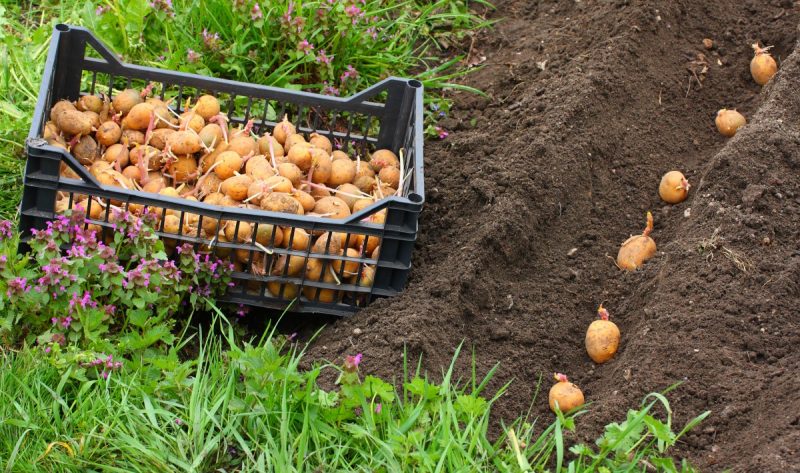
Gardeners begin to plant seed potatoes with sprouts in mid-April. However, these dates may be offset due to climatic conditions. In the south, for example, potatoes are planted under a film at the end of February. Without certain knowledge, you should not risk it, because potatoes are very sensitive to low temperature crops. Potato tubers begin to germinate at soil temperature + 8-10 ° C. To get a good harvest, it is worth adapting to the weather conditions of individual regions.
Conservative planting methods
Traditionally, during the planting of tubers, the whole family gathered, from adults to children. They dug holes with a shovel, loosened them and laid potatoes with sprouts there. After which the holes were buried, they went on. Since then, nothing has changed significantly. Tubers are planted at a depth of about 8 cm with an interval of 0.5 m. Ground heaps 20-30 cm high are erected on the surface. It is necessary to place the tubers in the soil at the same depth and distance from each other, to maintain the interval between rows.
Innovative Landing Techniques
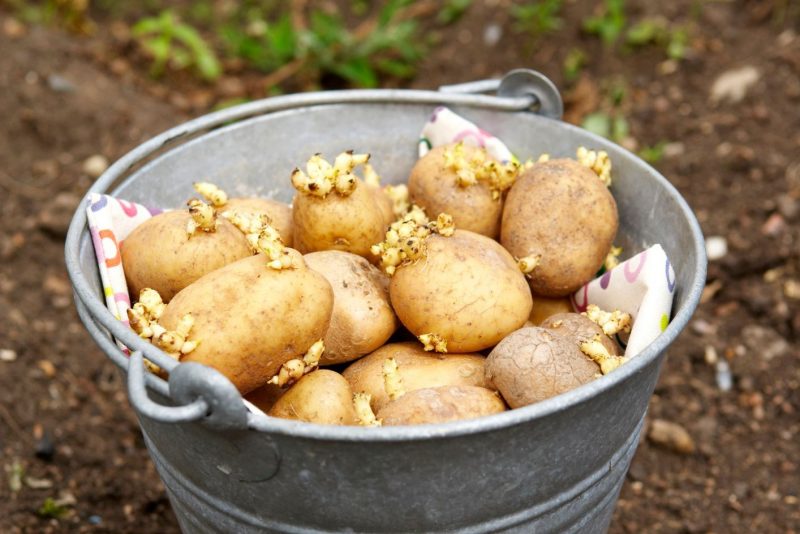
Cultivating the land in the plots, gardeners come up with different ways to simplify the cultivation of potatoes. Innovative methods allow you to harvest in small areas — this is done to a greater extent in order to save space in the garden. In the process, gardeners realized that caring for such beds is much easier. Most popular methods:
Growing potatoes in bags
The advantage of this method is that the bags can be delivered anywhere. They are pre-filled with fertile soil. Tubers planted in this way must be watered frequently, since moisture quickly evaporates in the bag. For planting, polypropylene bags are suitable, which should be filled with drainage and a layer of soil with a thickness of 15-20 cm. Root crops grown in advance are laid on top, lightly sprinkled with earth. With the emergence of seedlings, with the growth of potato tops, earth is poured into the bag.
Planting potatoes in the grass
Summer residents, tired of weed control, came up with an effective way to grow potatoes in the grass. To begin with, the plot is mowed from weed grass. Rows of planting material are laid in rows. Above it is sprinkled with fertile soil and mowed grass. The roots from the grass that remained inside act as drainage. The advantage of the method is that there is no need to spud potatoes, periodically enough under the bushes to lay the rest of the grass.
Growing under cardboard
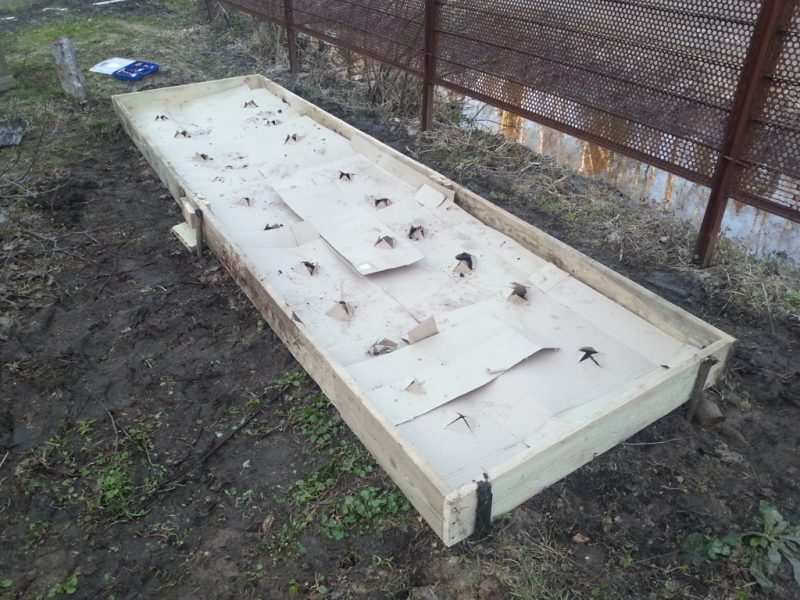
Entrepreneurial summer residents manage to get a good harvest of potatoes under ordinary cardboard. Before planting, the bed needs to be fertilized and loosened. Lay cardboard in rows on top. Next, you should make holes in it at the same distance. Inside the holes lay sprouted root crops. The method has disadvantages and advantages. Thanks to cardboard grass does not grow - this is a big plus. However, the question arises: where to get so much cardboard? Since it is not always possible to harvest cardboard in large quantities.
Unconventional methods of planting potatoes
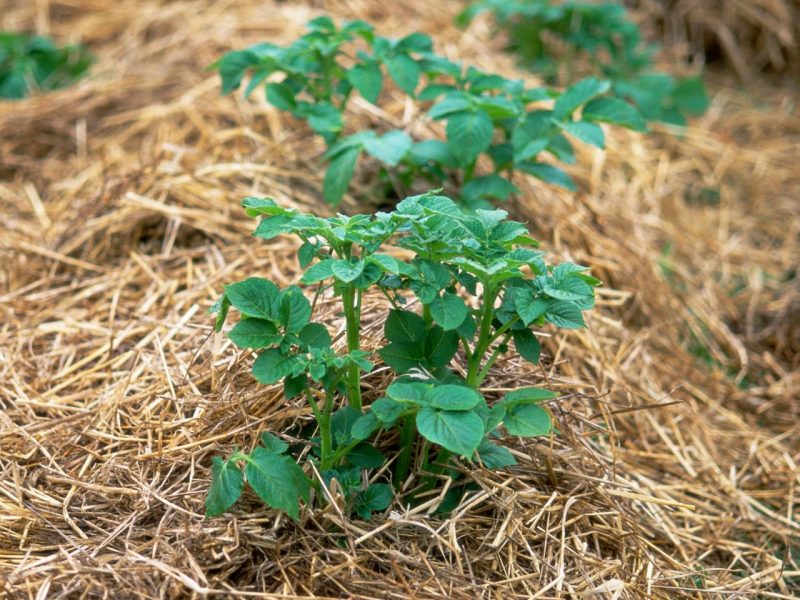
An unconventional method involves planting tubers without digging the ground.
- Preliminary preparation and germination of potatoes before planting will be carried out in the usual way.
- Further, you can use the tips of experienced gardeners or experiment with improvised materials. For example, plant tubers in straw or sawdust.
- This option is suitable for areas where there are a lot of stones, because of the lack of full-fledged beds, they make shallow ditches and put tubers there. Cover them with straw or sawdust.
- As they germinate, any covering material, for example, dry grass, is added under the bushes.
In order to grow potatoes without digging the ground, you can use boxes. Fertile soil is poured inside, where potatoes are planted. Water and care in the usual way.
Landing under a film and agrofibre
Using a film allows you to get early potatoes, when it is still in price. The film will accelerate the time of harvesting, protect plants from the cold, the Colorado potato beetle. When growing early potatoes, they do not make fertilizers that contain nitrogen, because nitrites accumulate in the tubers. Potatoes are usually harvested at the end of June. If the greenhouse is heated, harvest in the spring.
Early potatoes are not stored, it turns green, quickly loses their taste, so it is often grown for sale.
How and when to plant potatoes in a greenhouse
The timing depends on the region and the type of greenhouse, whether there is heating in it. In the south, this process occurs in the month of February-March. In the northern and central regions later. Potatoes planted under a film or agrofiber do not need to be watered immediately, because the tubers have a large water supply. Excess moisture contributes to the occurrence of fungal diseases, the soil will be infected. Watering is especially important during periods of drought. From the beginning of the growing season, weeds must be regularly removed. After about 2 to 3 weeks, you need to trench the trenches, form an embankment on rows 30 cm high. Harvest in greenhouses is collected in several stages, carefully undermine the bushes, and large tubers are picked. Then bury again so that the small potatoes grow.
Processing potatoes after planting
Processing of tubers (bushes) protects the plant from diseases or pests. With the advent of seedlings, growth stimulating agents, preparations from the Colorado potato beetle are used.
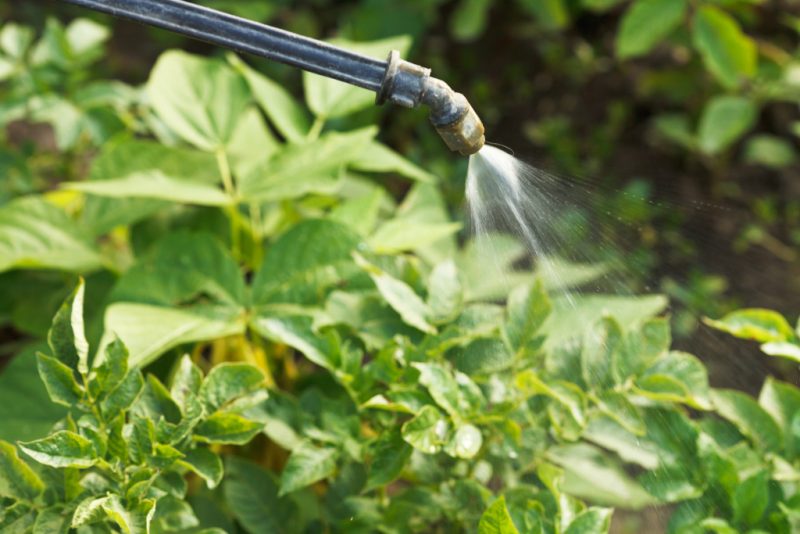
- Treating tubers with protective or stimulant drugs increases yields.
- Effective remedies are protected from soil pests, bugs and midges by Cruiser, Maxim, Prestige.
- Recently, agents based on biological substances obtained from organic matter have been successfully used.
In the modern world, the choice of plant protection products is so wide that it is difficult to determine the best. Even if the potato is planted with a walk-behind tractor, protection can not be dispensed with. The main thing in this matter is to determine for yourself what is the priority - productivity or saving on protectants.
Secrets to Getting a Good Harvest
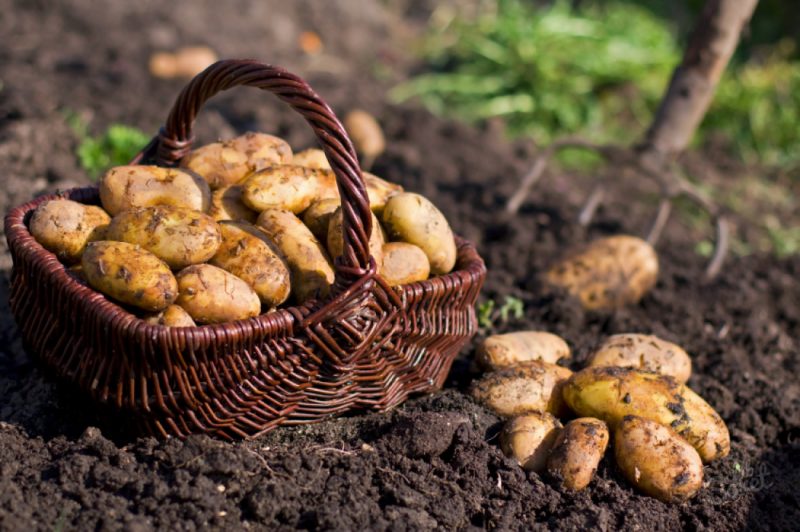
- It is impossible to get a good crop if potatoes are not prepared for planting.
- It is important to select high-quality seed material, to germinate it well and to observe agricultural rules during the growing season.
- From ancient times, following folk traditions, wood ash was thrown into the holes with potatoes. Dill or bush beans were planted between each furrow.
- Potato loves watering, it is reduced only for flowering time and is stopped when the bushes dry.
- The sooner the tubers are planted, the more fruitful the year will be. Even if snow fell on the beds after planting - this is a good sign!
Proper planting determines the success of subsequent agricultural operations that will be performed during the growing season.












